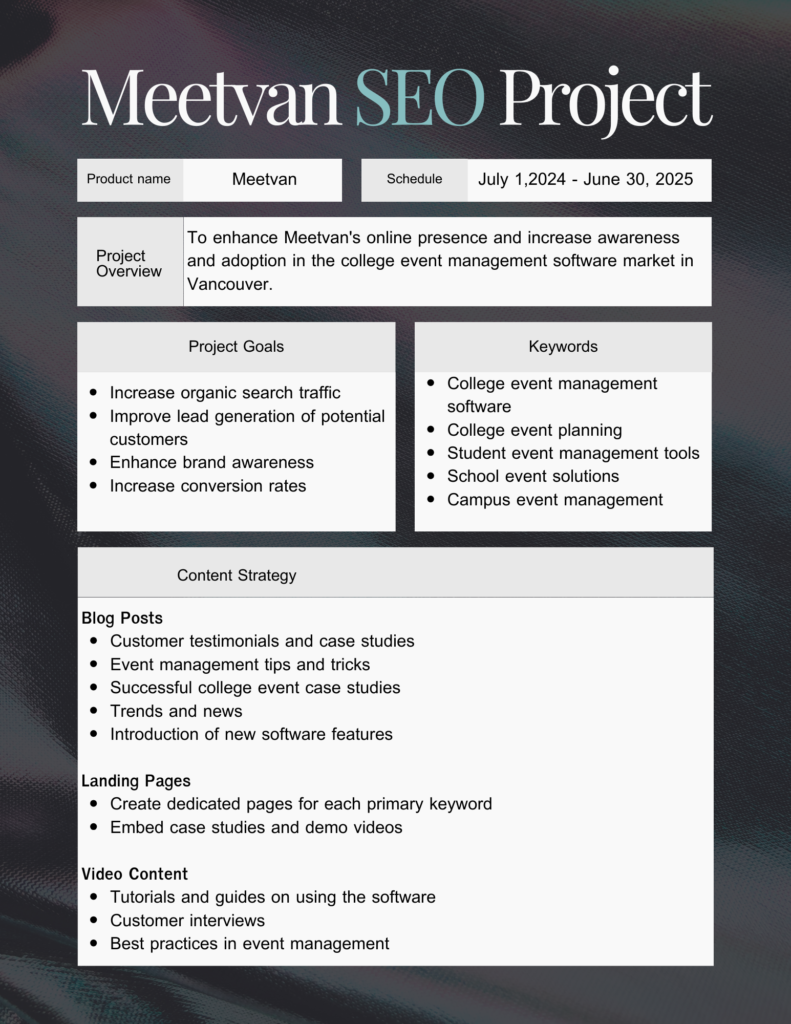Ultimate Guide to SEO for Beginners
Learn the fundamentals of SEO with our comprehensive guide. Get tips on keyword research, on-page optimization, and more to improve your search rankings.
1. Introduction to SEO
SEO, or Search Engine Optimization, is the practice of optimizing your website to rank higher in search engine results pages (SERPs). By improving your SEO, you can increase the visibility of your website, attract more traffic, and ultimately grow your business.
– What is SEO?
Search Engine Optimization (SEO) is the process of optimizing a website to improve its visibility in search engine results pages (SERPs). It involves a combination of strategies and techniques designed to increase organic (non-paid) traffic from search engines like Google, Bing, and Yahoo. SEO focuses on enhancing various aspects of a website, including content quality, keyword usage, site structure, and technical performance, to make it more attractive to search engines and users.
– Why is SEO Important?
- Increased Visibility and Traffic: SEO helps your website rank higher in search engine results, making it more likely that users will find and visit your site. Higher visibility leads to increased organic traffic.
- Cost-Effective Marketing: Unlike paid advertising, SEO targets users who are actively searching for information related to your products or services, making it a cost-effective way to attract qualified leads.
- User Experience: Good SEO practices improve the overall user experience by making your site more navigable, faster, and mobile-friendly. This can lead to higher engagement and lower bounce rates.
- Credibility and Trust: Websites that rank higher in search results are often perceived as more credible and trustworthy by users. Effective SEO can enhance your brand’s reputation and authority in your industry.
- Competitive Advantage: Investing in SEO can give you a competitive edge over other businesses that are not optimizing their websites. By appearing higher in search results, you can capture more market share.
- Long-Term Results: While SEO requires time and effort, the results are long-lasting. A well-optimized website can maintain its search rankings and continue to attract traffic over time, unlike paid ads that stop generating traffic once the campaign ends.
By understanding and implementing SEO, businesses can improve their online presence, attract more visitors, and ultimately achieve their marketing and sales goals.
2. Keyword Research
Keyword research is the process of identifying the terms and phrases that your target audience uses to search for information online. Using tools like Google Keyword Planner, Ahrefs, and SEMrush, you can discover high-volume, low-competition keywords that are relevant to your business.
Tool : Google Keyword Planner / Ahrefs / SEMrush
– How to Use Keywords Effectively
Steps:
- Brainstorm a list of relevant topics related to your business.
- Expand these topics with specific keywords and phrases.
- Analyze the search volume, competition, and relevance of these keywords.
- Select a mix of short-tail and long-tail keywords.
3. On-Page SEO
– Objective: Optimize individual pages on your website to rank higher and earn more relevant traffic in search engines.
Title Tags: Craft unique, descriptive, and keyword-rich titles for each page.
Meta Descriptions: Write compelling meta descriptions that include primary keywords.
Header Tags: Use H1 tags for the main heading and H2/H3 tags for subheadings, incorporating keywords naturally.
URL Structure: Create clean, descriptive URLs that include keywords.
Content Optimization: Ensure your content is high-quality, valuable, and includes keywords naturally. Avoid keyword stuffing.
Image Optimization: Use alt text and descriptive file names for images.
Internal Linking: Link to other relevant pages on your site to enhance navigation and spread link equity.
Mobile Optimization: Ensure your site is mobile-friendly and responsive.
Page Speed: Optimize your site for fast loading times using tools like Google PageSpeed Insights.
Tool(Google Plug in) : SEOquake / SEO Pro Extention
★Click to Right on the web page ➤“ Inspect”➤Can see HTML on the website
4. Technical SEO
– Objective: Improve the technical aspects of your website to help search engines crawl and index your site more effectively.
- XML Sitemap: Create and submit an XML sitemap to search engines.
- Robots.txt: Use the robots.txt file to control which pages search engines can and cannot crawl.
- Structured Data: Implement schema markup to enhance your listings with rich snippets.
- Canonical Tags: Use canonical tags to prevent duplicate content issues.
- SSL Certificate: Ensure your site is secure by using HTTPS.
5. Content Creation
– Objective: Develop high-quality, engaging content that provides value to your audience and attracts backlinks.
Tool: WP compress ; Compress images and use descriptive file names.
- Blog Posts: Write informative and well-researched articles on topics relevant to your audience.
- Guides and Tutorials: Create comprehensive guides and how-to tutorials.
- Infographics and Videos: Produce visually engaging content like infographics and videos.
- User-Generated Content: Encourage reviews, comments, and other forms of user interaction.
6. Off-Page SEO
– Objective: Build your website’s authority and trustworthiness through external factors like backlinks and social signals.
- Backlink Building: Acquire high-quality backlinks from reputable websites.
- Guest Blogging: Write guest posts for other websites in your industry.
- Outreach: Reach out to bloggers and influencers to get links to your content.
- Broken Link Building: Find broken links on other websites and suggest your content as a replacement.
- Social Media Marketing: Promote your content on social media platforms to increase visibility and attract traffic.
- Local SEO: Optimize for local search by creating a Google My Business profile and getting reviews.
7. Monitoring and Analytics
– Objective: Track your SEO performance and make data-driven decisions to improve your strategies.
- Google Analytics: Monitor traffic, user behavior, and conversion rates.
- Google Search Console: Track your search performance, identify indexing issues, and receive alerts.
- SEO Tools: Use tools like Ahrefs, SEMrush, or Moz to monitor backlinks, keyword rankings, and site health.
8. Continuous Improvement
– Objective: Stay updated with the latest SEO trends and continuously refine your strategies.
- Algorithm Updates: Keep an eye on Google algorithm updates and adjust your strategies accordingly.
- Competitor Analysis: Analyze your competitors’ SEO strategies and find opportunities for improvement.
- Content Refresh: Regularly update your existing content to keep it fresh and relevant.
◆Example Plan for a New Website
Month 1: Foundation
- Keyword Research: Identify primary and secondary keywords.
- Technical SEO: Ensure the site is crawlable and indexable.
- On-Page SEO: Optimize title tags, meta descriptions, headers, and content.
Month 2: Content Creation
- Blog Posts: Publish high-quality, keyword-optimized blog posts.
- Internal Linking: Improve site navigation with internal links.
Month 3: Off-Page SEO
- Backlink Outreach: Start a backlink-building campaign.
- Social Media Promotion: Share content on social media platforms.
Month 4: Monitoring and Adjustment
- Analytics Review: Use Google Analytics and Search Console to track performance.
- Content Update: Refresh and update existing content based on performance data.
By following these steps and maintaining a consistent effort, you can build a strong SEO foundation that will help your website rank higher in search engine results and attract more organic traffic.
◆Sample

